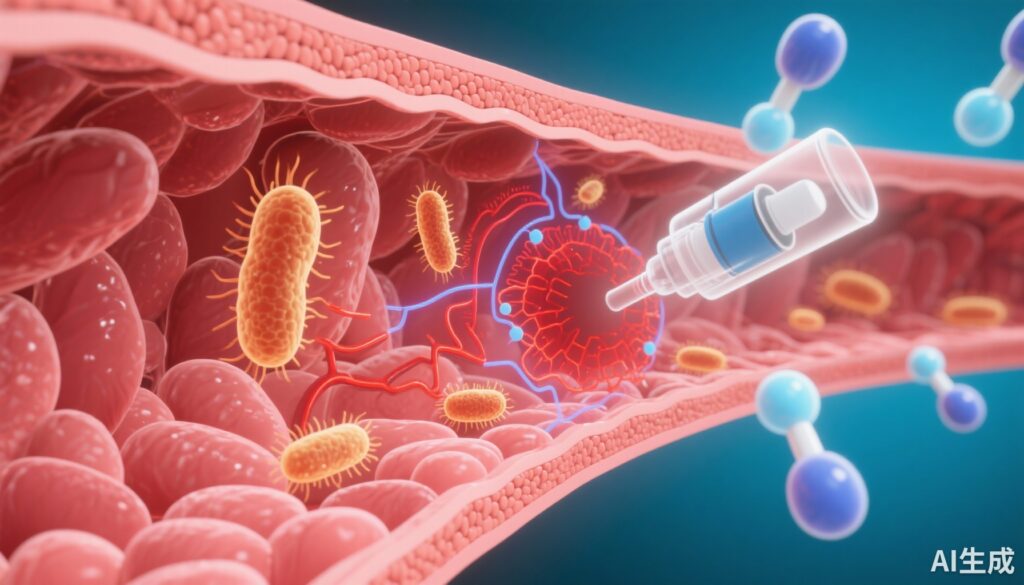Study Background and Disease Burden
Chronic obstructive pulmonary disease (COPD) is a heterogeneous respiratory disorder characterized by persistent airflow limitation and a chronic inflammatory response in the airways and lung parenchyma. Globally, COPD is a leading cause of morbidity and mortality, posing a significant clinical and socioeconomic burden. Traditionally, neutrophilic inflammation dominates COPD pathology; however, a distinct subset of patients exhibits airway eosinophilia, defined by increased eosinophil counts in distal airways. This eosinophilic endotype overlaps with type 2 inflammatory pathways classically associated with asthma, implicating potential differential pathophysiology and therapeutic responses. Understanding the molecular signatures linked to airway eosinophilia could refine COPD phenotyping and guide personalized treatment strategies, particularly regarding the use of inhaled corticosteroids (ICS). Despite known clinical associations, the transcriptomic landscape of airway epithelium in eosinophilic COPD and its response to ICS remain poorly defined.
Study Design
This post hoc analysis derived from the DISARM (Dual Bronchodilator and Corticosteroid Influence on Airway Remodelling in COPD) randomized controlled trial aimed to compare airway epithelial gene expression profiles focused on type 1, type 2, and type 17 inflammatory pathways, along with interleukin (IL)-13 and mast cell gene signatures, between COPD patients with and without airway eosinophilia. In total, 58 COPD patients underwent bronchoalveolar lavage (BAL) to quantify airway eosinophils, with airway eosinophilia defined as eosinophils exceeding 1% of total leukocytes in BAL fluid. Airway epithelium was sampled via brushings and subjected to RNA sequencing to generate transcriptomic gene signatures. Participants were treated with inhaled corticosteroids for 12 weeks, after which changes in epithelial gene expression were evaluated. Gene set enrichment analysis identified canonical pathways enriched in the eosinophilic subset.
Key Findings
Among the studied population, 38% exhibited airway eosinophilia at baseline. Clinically, these patients demonstrated more severe airflow obstruction and a greater extent of radiographic emphysema relative to non-eosinophilic counterparts. Transcriptomic analyses revealed significantly elevated expression of type 2 inflammation-associated genes, including IL-13 and mast cell activation signatures, in the airway epithelium of eosinophilic COPD patients at baseline. Conversely, expression levels of type 1 and type 17 inflammatory signatures did not differ markedly between groups, suggesting a specific enrichment of type 2-driven immune responses in this subset.
Further, pathway analyses demonstrated upregulation of canonical immune pathways related to type 2 inflammation and asthma pathobiology in the eosinophilic group. Importantly, 12-week ICS treatment led to a statistically significant reduction in epithelial expression of type 2 inflammatory and mast cell gene signatures exclusively in patients with airway eosinophilia, while no substantial modulation of these pathways was observed in non-eosinophilic individuals. These findings corroborate the clinical observation that ICS are more effective in COPD patients with eosinophilic airway inflammation.
Expert Commentary
This study provides compelling molecular evidence positioning airway eosinophilia as a biologically distinct COPD endotype characterized by heightened type 2 inflammation and mast cell activity in the airway epithelium. The observed ICS-mediated attenuation of type 2 gene expression supports the rationale for eosinophil-guided corticosteroid therapy in COPD, consistent with current guidelines recommending blood eosinophil counts as biomarkers for ICS responsiveness.
Mechanistically, IL-13 drives mucus hypersecretion, airway remodeling, and eosinophil recruitment, while mast cells contribute to airway inflammation and tissue remodeling. Suppression of these cellular pathways by corticosteroids may underlie clinical improvements in lung function and exacerbation rates. However, the similarity in type 1 and type 17 inflammation between groups suggests that these pathways are not primary drivers in eosinophilic COPD and may represent non-specific inflammatory processes.
The study’s strengths include the use of RNA sequencing from airway epithelial brushings—providing cell-specific transcriptomic data—and the integration of well-characterized clinical phenotypes with molecular profiles. Limitations include its post hoc nature, relatively small sample size, and the definition of airway eosinophilia based on bronchoalveolar lavage rather than peripheral blood eosinophils, which limits immediate clinical applicability but enhances biological specificity.
Conclusion
Airway eosinophilia identifies a COPD subset with a distinct airway epithelial type 2 inflammatory transcriptomic signature and a demonstrable response to inhaled corticosteroid treatment. These findings advance our understanding of COPD heterogeneity and support precision medicine approaches employing molecular phenotyping to optimize corticosteroid utilization. Future prospective studies should validate peripheral biomarkers reflecting airway eosinophilia and evaluate long-term clinical outcomes of stratified ICS therapy in COPD. Integrating transcriptomic data with clinical phenotyping represents a promising pathway toward individualized care in chronic airway diseases.
References
Leung C, Park HY, Li X, Koelwyn GJ, Tuong J, Vahedi SM, Leitao Filho FS, Yang JS, Eddy RL, Milne S, Ryu MH, Takiguchi H, Akata K, Ra SW, Moon JY, Kim HK, Cho Y, Yamasaki K, van Eeden SF, Shaipanich T, Lam S, Leung JM, Sin DD. Transcriptomic profiling of the airway epithelium in COPD links airway eosinophilia to type 2 inflammation and corticosteroid response. Eur Respir J. 2025 May 6;65(5):2401875. doi: 10.1183/13993003.01875-2024. PMID: 39978857.
Singh D, Kolsum U, Brightling CE, Locantore N, Agusti A, Tal-Singer R. Eosinophilic inflammation in COPD: prevalence and clinical characteristics. Eur Respir J. 2014;44(6):1697-700.
Bafadhel M, Pavord ID, Russell REK. Eosinophils in COPD: just another biomarker? Lancet Respir Med. 2017 May;5(5):373-374.



